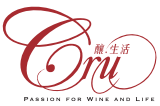About Riesling Weeks
Our promotion to support this event is
A discount of 25% on all German wine + a souvenir with free delivery service for any mix case of 12 bottles
Details of wine from Mosel, price table
Details of wine from Pfalz, price table
A two- week promotion organised by the German Wine Institute to link restaurants, wine bars and retail outlets around Hong Kong and China showcasing the quality and great taste of German Riesling.
Promotional period: 4th May - 30th June 2013
Riesling Week was conceived in 2006. Held in four key cities in the US: New York, Chicago, Las Vegas and San Francisco, it was an instant success and the campaign has since evolved into a month long programme, ’31 Days of German Riesling’, with over 400 participating restaurants and wine shops all over the US.
Today, the three countries running the ’31 Days of German Riesling’ are the US, Canada and the UK. Other European countries, including Denmark, Norway, Sweden, Belgium, the Netherlands, Switzerland and Finland run 10 - 14 day ‘Riesling Weeks’. This year, Hong Kong is proud to join this global campaign for the first time.
During the period, participating restaurants and retailers will offer diners at least three German wines, of which two should be Rieslings and the other(s) one may be other German varieties such as Pinot Noir, Pinot Gris, Pinot Blanc, Gewürztraminer, etc . Each outlet may have its own interpretation of the theme, including special Riesling menus, wine by the glass, sample tastings, discount, and so on.
Please check rieslingweeks.germanwines.de for the latest list of participating restaurants and retail outlets.
Two ways to win a twin pack of Riesling!
Just visit any of the participating restaurants, bring a bottle (or two) of German Riesling to any BYO outlet or enjoy them with your own delicious home cooking. Use your imagination and take a photo of a Riesling you have tried, and email it to us at RieslingWeeks@gmail.com to enter the ‘Most Creative Riesling photo contest’. The most creative photo entries will win a twin pack of Riesling.
If you order a Riesling at any participating re staurants, you will also receive an OpenRice QR code. Just scan the code and you will be able to enter a lucky draw to win a twin pack of Riesling.
Meet the Princess
The German Wine Princess 2012 - 2013, Ms Natalie Henninger, will be visiting Hong Kong during the promotional period and will make surprise visits to participating outlets and restaurants. You could be one of the lucky ones to take a photo with her and ask her all you want to know about German Rieslings.
Pairing Riesling with food
With its versatile style, from light to intense, delicate to powerful, dry to sweet, but all with firm acidity, German Riesling is the perfect companion to Asian food. Here are some tips:
Delicate and fragrant dishes such as steamed seafood, steamed chicken with gi nger, deep fried Thai spring rolls: try these with a dry Riesling that is as refreshing as the dish or an off- dry Riesling that balances the dish’s sweet fragrance.
Roast meat such as Peking duck, roast pigeon or barbecued pork: a concentrated Spätlese Riesling has the acidity to cut through the fat, yet the body is robust enough to stand up to the dish. Its sweetness also echoes the plum sauce that often accompanies the meat.
Stir- fried dishes: these go well with dry Rieslings from Spätlese trocken to Auslese trocken depending on the weight of the dish. For spicy stir- fries, the sweetness in an off - dry Riesling nicely counterbalances the spiciness.
Japanese: sashimi is best paired with a crisp, light dry Riesling to compliment the flavour, while a heavier grilled fish with sweet sauce would be ideal with an aged off - dry Riesling that has sufficient concentration to balance the food.
Thai: fragrant, with herbs and sweet coconut, yet not fierily spicy, Thai food is best with an off - dry or semi- sweet Kabinett, Spätlese or Auslese.
The diversity of Riesling
German Riesling comes in a wide variety of styles that makes it highly versatile as a food companion. They are classified as:
Kabinett: Light and the most delicate. Usually 8- 10% alcohol, with a vibrant acidity well balanced by a touch of residual sugar.
Spätlese: Elegant and more concentrated with pronounced fruit aromas. It can be dry (trocken) or medium.
Auslese: A richer style than Spätlese made from individually selected ripe bunches. Again, it can be dry or sweet.
Beerenauslese: A sweet wine made with overripe grapes that may be affected by noble rot. A complex and rich wine with longevity. Not made every year.
Trockenbeerenauslese: Botrytis affected sweet wine made only in the best vintages. Extremely elegant and long lived, with intense exotic fruit aromas balanced by high acidity.
Eiswein: Ice wine made from healthy grapes harvested at - 8ºC. It has pronounced pure fruit aromas.
German wine at a glance
Crisp and slightly effervescent, fruity, hints of mineral – these are the traits that distinguish German white wines from their counterparts in other countries. This profile is shaped by the special climatic and soil conditions in Germany’s wine growing regions.
Germany is one of the most northerly wine growing countries in the world. It has 13 different wine regions, from the cooler Saale - Unstrut and Sachsen in the north east to the warmer and sunny regions of Baden and Pfalz. Most vineyards are planted on south- facing slopes along river bank s to benefit from the warmth reflected from the water. It has a long growing season with warm days and cool nights, allowing grapes to ripen slowly, thus preserving acidity while developing the flavours. As a result, German wines are more aromatic with a mineral touch, a perfect wine to pair with food, especially Asian cuisine.
The Mosel is perhaps the most famous region in Germany with its steep vineyards sloping at 65º angles, its slate soils and its high quality Rieslings. The wines are delicate with a racy acidity and rich fragrance.
Rheingau is at the heart of the German wine regions with an optimal climate for ripening both Riesling and Spätburgunder (Pinot Noir). It is famous for its elegant dry and off- dry Rieslings with stone fruit aromas supported by lively acidity.
The other wine regions are: Ahr, Nahe, Mittelrhein, Rheinhessen, Hessische Bergstrasse, Franken, Pfalz, Württemberg and Baden; plus Sachsen and Saale- Unstrut in the former East Germany.
Other German terms
Trocken: Dry. Any wine labe lled with this word will have less than 9g/l residual sugar.
Halbtrocken: Off- dry, usually 9 - 18g/l residual sugar.
Feinherb: Half- dry, an unregulated designation, usually sweeter than halbtocken, in the range of 12 - 40g/l residual sugar.
Grosses Gewächs (GG)/Erste Gewächs: Equivalent to Grand Cru. Dry wine from Erste Lage (first growth vineyards) under the VDP classification. Alcohol level usually 12- 13.5%.
VDP: the Association of German Quality Wine Estates.
Official Partners:
Participating restaurants
- Berliner German Bar and Restaurant, Wanchai
- Berliner German Bar and Restaurant, Olympian City
- Berliner German Bar and Restaurant, Soho East
- Berliner German Bar and Restaurant, Discovery bay
- La Trattoria de Parma, Kwun Tong
- W’s Entrecôte, Causeway Bay
- Koh Tomyums, Discovery Bay
- YunYan Sichuan Restaurant, Tsimshatsui
- Benson Cuisine & Wine, Happy Valley
- Hip Cellar Private Kitchen, North Point
- Amo Eno Wine Bar, Central
- Brasserie on the Eighth, Conrad Hotel, Queensway
- Golden Leaf, Conrad Hotel, Queensway
- Nicholini’s, Conrad Hotel, Queensway
- Loong Toh Yuen, Hullett House, Tsimshatsui





